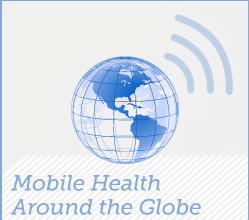Accountable Care Organizations, or ACOs, are a hot topic among healthcare professionals, but I venture to say that not many people understand what is happening and why.
Accountable Care Organizations, or ACOs, are a hot topic among healthcare professionals, but I venture to say that not many people understand what is happening and why.
Everyone understands that the cost of healthcare continues to rise. Some of that can be attributed to higher malpractice premiums doctors, especially in fields like obstetrics, have to pay for protection against bad outcomes. Drug companies spend millions on the research and development of new drugs and new treatment options; medical device companies do the same developing knee replacements, smaller pacemakers, etc. Now, there is added emphasis on making healthcare accountable by providing reimbursements to physicians and hospitals based on effectiveness and efficiency. That’s the purpose of an Accountable Care Organization; providers in this kind of group agree to be responsible for the quality and cost of care they offer their patients. There are government guidelines for how to set up an ACO aimed at fostering clinical excellence while continuing to provide patients with the freedom to choose their medical services.
When you’re concerned with efficiency, you look for ways to do what you do now in a better, more effective (and less costly) way. Since time is money, you, as the doctor, want to spend only the appropriate amount of time seeing patients. That’s where today’s technology comes in. It offers ways to connect with patients that were unavailable just a few years ago. No longer is the distance beween patient and doctor a barrier. Telemedicine offers the convenience of bringing doctors to the patients by reducing “windshield time” – the time it takes for a patient to drive into an urban area to see a specialist. ACOs are looking to technology to help them manage patients.
Wouldn’t it be great if we could plan our illnesses to occur between 8am and 5pm, Monday through Friday? From my experience, I typically start getting sick on a Friday afternoon. By the time I’m feeling lousy, it’s Friday night. So now I may have to suffer through the weekend, waiting for Monday when I can make an appointment to see my primary care provider. When you are really sick though, waiting until Monday might be a bad idea. Thank goodness for urgent care centers, but they often demand to know you can pay before you see the doctor. If you don’t have insurance or can’t come up with the fee, they can legally turn you away. That’s why so many people go to hospital emergency rooms; they don’t have access to a PCP. Crowded emergency rooms require more staff to function efficiently. Mobile telemedicine offers timely access to healthcare that may help relieve the pressure on ERs.
Part of the move toward ACOs involves ownership of physician practices. In the last year or two, hospitals have spent a lot of money acquiring them. The days of the solo practitioner appear numbered as more and more physicians are becoming employees of a hospital/ACO. Interest in telemedicine solutions has never been higher because ACOs understand that these physicians “on the payroll” present them with an opportunity to utilize them at all times of the day and week via on-demand care. According to the Web site, Internet World Stats, 78% of Americans are Interet users. Eventually, administrators of ACOs are hoping to see a system that eliminates the need for people to go to a hospital or clinic to see providers. Already, people can use their smartphones to take pictures of a medical problem and email them to a healthcare provider.
Next month, the Centers for Medicare & Medicaid (CMS) will begin holding hospitals accountable for patient readmissions within 30 days of discharge. Hospitals are scrambling to develop programs to monitor and care for patients during that first month after discharge because they don’t want to lose money. Expect to see a lot of home monitoring kits sent home with patients so that providers are aware of early warning signs in heart, high blood pressure and diabetic patients. These systems rely on patients taking their vital signs and sending them to their doctor via email. So compliance is a factor in the success of home monitoring. Making sure patients are following their discharge instructions may require home visits. Nurses, physical therapists, even medical assistants could check on patients and try to encourage them to follow their treatment plan so they don’t wind up back in the hospital. Telemedicine can play an active role in analyzing a patient’s condition and connecting the patient with his or her physician via video conference for a “pep talk.”
What we see today is not what we’ll end up with tomorrow. New technology and new ways to use old technology will continue to move us closer to a home-based telemedicine system. But seeing and monitoring patients are just two legs of the stool. We need ways to capture data and images and save them in a patient’s electronic medical record that is available 24/7/365.
While designing telemedicine systems, GlobalMed has looked to the future, knowing that even though technology can do a lot today, physicians’ expectations are that improvements can and will be made. That’s why we’ve developed the most highly advanced HD examination camera, why our image automation software is so versatile and intuitive, why we have a solution that allows physicians to view visible and invisible light patient medical images on their smartphone, tablet or other computer as soon as they are saved in the patient’s EMR.





